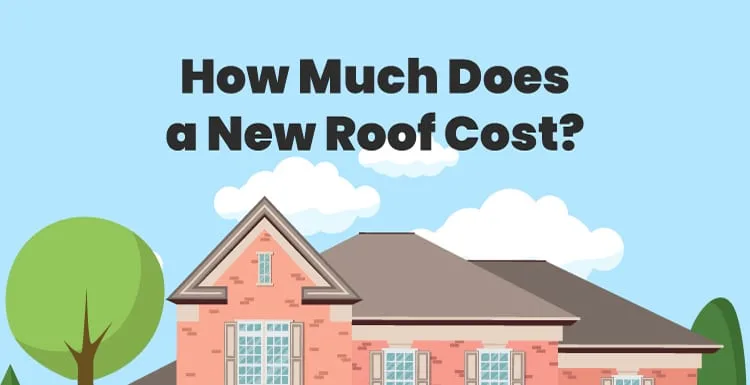A new roof is a big expense for any homeowner. No one wants to skimp on materials or end up overpaying for a project as big as this.
Understanding what the average costs are is important to knowing whether you’ve gotten a fair quote and estimate. Certain materials and roof types are less expensive than others.
Whether you’re trying to have a new roof installed on a tight budget or want the best materials and extras, you should learn about what goes into the overall cost of a new roof.
In this guide, we explore everything you need to know about new roof costs. This includes:
- Average price of a new roof
- Average roof replacement cost
- Roof removal and replacement costs
- Roofing labor costs
- Roofing material prices
- Roofing estimates and quotes
You’ll learn all about roof costs and how they’re determined in our guide. Let’s start with a quick overview and the average price of a new roof.
We partnered with Networx to help you find local roofing companies. Click to below to get a FREE quote.
How Much Does a New Roof Cost?
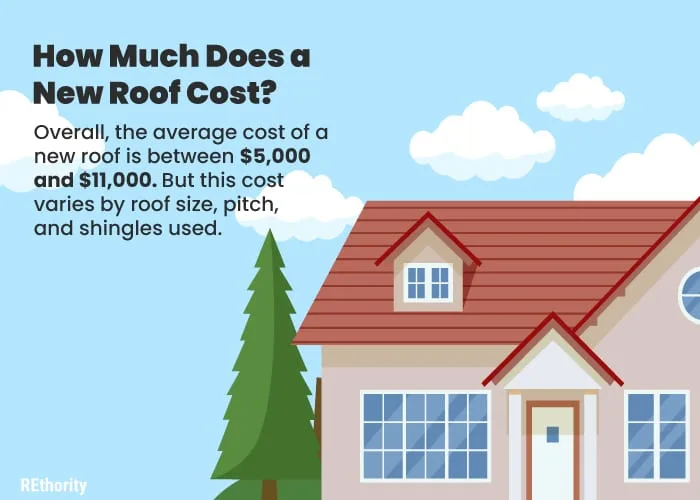 We’ll go over these topics in more detail throughout the guide, but here’s a quick overview. A new roof’s cost is based on a few factors.
We’ll go over these topics in more detail throughout the guide, but here’s a quick overview. A new roof’s cost is based on a few factors.
These include roof size, materials, pitch, installation method, layers removed, and any special features (like chimneys, skylights, or turrets).
Your location and the average labor cost of roofing contractors is also a factor. Overall, the average cost of a new roof is $5,000 to $11,000.
This price includes labor and materials. Typically, more than half of the total cost (around 60%) covers the crew’s labor. The rest covers the supplies and materials.
Keep in mind that this is a broad estimate that doesn’t take your individual home and roof needs into account. You can find more detailed pricing information throughout the rest of this guide.
Roof Cost Factors
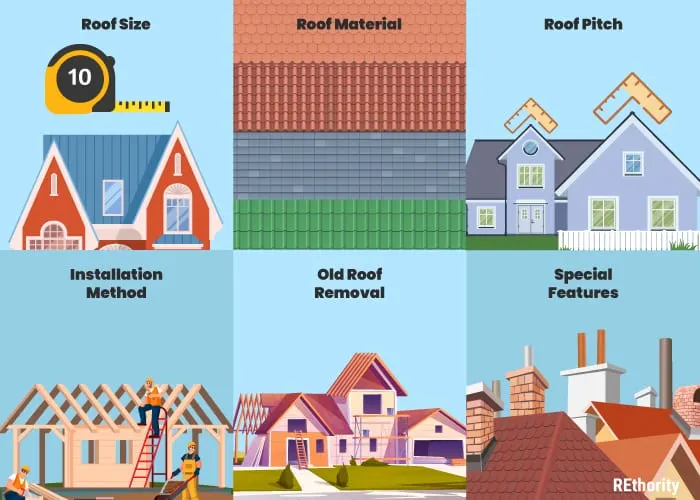
Installing a new roof generally consists of removing existing roof layers, repairing the underlying roof structure if needed, and installing the new roofing material.
You’ll pay for this labor and the raw materials used for the job, but that’s not all that gets factored into the cost. Let’s look at the factors that affect roof cost in a little more detail.
Here’s how roof size, materials, pitch, installation method, layers removed, and special features work into the overall new roof cost.
Roof Size
The size of your roof will definitely affect how much you’ll end up paying for a new one. While we generally talk about the size of a home in square feet, roofs are sized a little differently.
Roofing squares (100 square feet) are used instead of individual square feet. The average United States home roof (for a 2,200 sq. ft. house) comprises about 17 squares.
If you have a large 2 or 3 story home, your roof size may not be a reflection of your home size (depending on the layout of your home).
It could be the same roof size as a smaller one-story house. Since roofs are priced per square, the size is one factor in a new roof’s overall cost.
Roof Material
The roofing material is another factor in the cost. Some materials are cheaper than others. The most common roof materials are shingles, metal, copper, wood, slate, and tile.
In general, roofing materials range from about $100 per square (100 square feet) to as much as $1,000 per square.
Here are the average material prices for a 17-square roof for different types of shingles. These estimates don’t include labor.
- Asphalt shingles: The most affordable roofing material, costs about $2,500 but can be lower or higher depending on shingle type
- Metal: Depends on whether metal tile or standing seam is used, but price ranges from about $2,550 to as much as $27,000
- Wood: Cedar shingles will cost anywhere from $7,650 to about $15,300
- Tile: Price depends on the type of tile used, but average cost ranges from about $6,800 to $15,300 for concrete tile and $11,900 to $17,000 for clay tile
- Slate: Known for extreme durability and prestige, slate costs anywhere from $6,545 to $27,200
- Copper: You can expect to spend $25,000 and up on a copper roof
Roof Pitch
Your roof’s pitch will affect the cost because it can make the job easier or harder for the roofing crew. A steeply pitched roof on a Tudor style home with multiple peaks is much more difficult to reroof than a low-pitched roof on a ranch style home.
Roof pitch tells you the number of inches a roof rises for every foot of depth as it is measured toward the ridge or peak. So a 4/12 roof pitch explains that the roof slopes or rises 4 inches for every foot measured toward the roof’s peak.
For example, ranch homes typically have a 4/12 pitch, but Tudor homes’ roof pitch can range from 8/12 to 14/12. That’s a lot steeper and, therefore, much more challenging to work on.
Installation Method
Roof materials are installed in different ways. Some installation methods are more involved and complex than others, which will be reflected in the roof’s overall cost.
For example, shingles can be hand-nailed or air-nailed. They may be installed with the step shingling or vertical racking methods.
Metal roofs can be installed with through-fastener or clip fastener systems. The installation method your roofing crew uses could make the job a little more or less expensive, depending on the method.
Old Roof Removal
The existing roof layers that need to be removed before the new roof can be installed will factor into the cost, too. A single shingle layer might cost about $1,700 to $2,550 to remove.
And double and triple layers can be as much as an additional $3,000. The roof pitch factors into the cost for layer removal, too. Roofers will charge more to remove layers on a steep roof.
Special Features
Any special features on your roof that must be covered in your roofing material or worked around and sealed will add to the cost.
This includes chimneys, skylights, pipes, turrets, dormers, and any ornamental details. The cost will vary widely based on the difficulty or complexity of the work.
Average New Roof Installation Cost
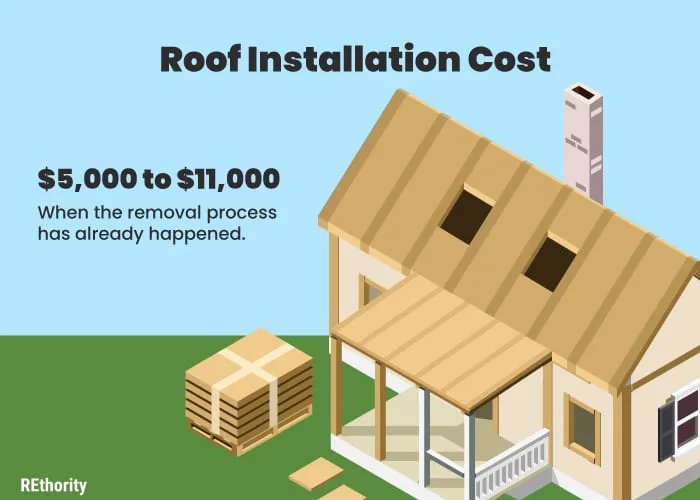
Now that you’ve seen how different factors will affect the overall cost to install a new roof, let’s look at the average overall price in a little more detail.
Nationwide, you can expect to pay anywhere from about $5,000 to $11,000 for a new roof. The median price is around $8,000.
If you have a new construction home, or if you’ve already removed the old roof layers yourself, these are estimates of what you’ll pay to have the roof installed.
Average Roof Replacement Cost
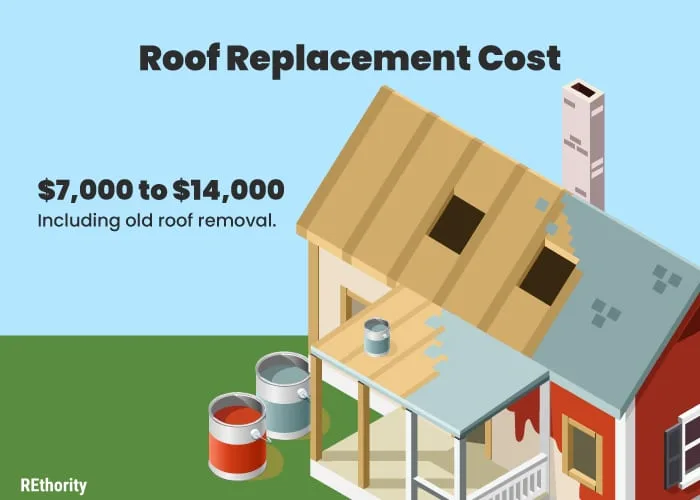
If you are having your old roof replaced with a new one, you also have to work in the cost of having the old roof removed. The averages above do not include the cost of removing your old roof.
With those removal costs worked in, the average total rises to about $7,000 on the low end to a high average of $14,000. If additional problems are found with your roof when the old roof layers are removed, they will need to be repaired.
These spot repairs for rotting wood or additional supports to reinforce a heavier roofing material can cost anywhere from $1,000 to as much as $10,000.
About 60% of what you pay covers the labor involved in the job. About 40% covers the actual supplies and materials used in the job.
So if you spend $8,150 on your new roof, $4,890 of it pays for the labor, and $3,260 covers the materials used.
Different cities across the U.S. may have higher or lower average roofing costs. Denver, CO is known for a higher than average roof cost, while it’s much lower than average in Nashville, TN.
What Should Your Roof Replacement Estimate Contain?
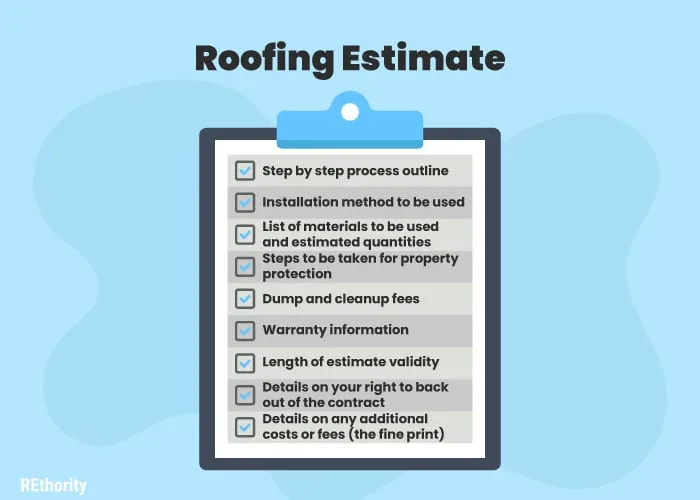
When you get a roof installation or replacement estimate, how do you know what should be on it?
A complete estimate that addresses every step of the project and clearly outlines what the company or contractor is responsible for can be an early indicator of their work quality.
A trustworthy company or contractor will want to provide you with as much detail and information as possible in the estimate or quote. It serves to make sure everyone’s on the same page and that there are no complete surprises.
With that being said, some things just won’t be discovered until the project is underway. It’s possible for unforeseen difficulties to pop up along the way, for additional materials to be required, or for repairs to be needed.
Any of these things would result in the final cost being higher than the estimate. A roofing estimate should generally include the following.
- Step by step process outline
- Installation method to be used
- List of materials to be used and estimated quantities
- Steps to be taken for property protection
- Dump and cleanup fees
- Warranty information
- Length of estimate validity
- Details on your right to back out of the contract
- Details on any additional costs or fees (the fine print)
Let’s take a closer look at what you might see on your roofing estimate. If you don’t see some of this information, just ask your contractor about it. It’s a good idea to get everything in writing.
Existing Roof Removal
Your estimate should indicate how many layers of the existing roof the crew will remove before beginning work.
This applies to shingled roofs. Laws limit the number of shingle layers that can be on a roof to 2 (they get too heavy for the roof structure beyond that).
So if you already have two layers of shingles on your roof, at least one will need to be removed before the new roof can be installed.
If the estimate indicates they will remove one layer only and you need a 2nd layer removed, the cost will go up.
Roof Installation Method
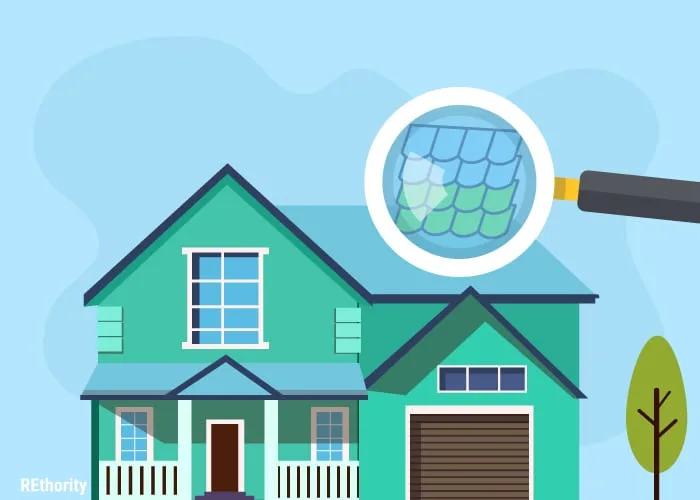
The installation method that will be used should be included in the estimate. The method will depend on the materials that will be used for your new roof.
So if you’re having a new shingle roof installed, the contractor may state that they will use a hand nailing method (and indicate the number of nails they will use per shingle).
They may use an air nailing method instead. For metal roofs, you may see that they plan to use a clip fastener system or a through-fastener system.
Property Protection Measures
Installing a new roof is a messy job. Your home will need to be adequately protected to keep your property from being damaged during the job. Any measures the crew will take to protect your property should be clearly outlined in the estimate.
For example, if you have a pool, the company should include a tarp to cover it during the roof installation.
Trees and landscaping around your home may be covered. It may be recommended to leave vehicles in the garage during the installation.
If you have an attic, it will collect a lot of dust and debris during the process. The company may include covering your property in the attic in the estimate for this reason.
Potential or Planned Repairs
If your roofing contractor already sees that a repair will be needed, they should include it in the estimate. Sometimes, needed repairs may not be known until the crew is removing the old roof.
In that case, it’s helpful for an estimate to include what will happen if an unforeseen repair is needed. They may include the cost per sheet for rotten decking, specific joist replacement costs, the cost of additional reinforcements or supports, etc.
To keep the job moving forward smoothly, some contractors may include the cost for additional decking, supports, or frame repairs in the estimate from the start. They will get these repair materials and have them on hand if they are needed.
This can be positive if the repairs end up needing to be made because there’s no stopping the job to get more supplies. But if you don’t end up needing the materials, it’s wasted money and materials.
Roof Replacement Components
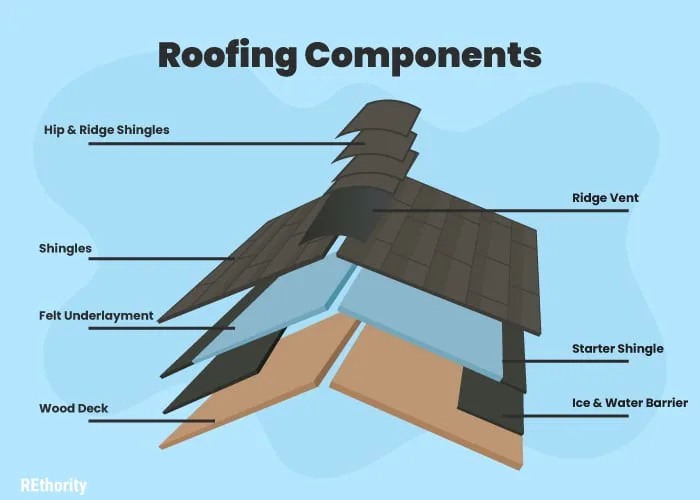
Every roof replacement or installation estimate should include a list of all the roof components that will be replaced or installed. Look for the following five components on your estimate if you’re having a shingle roof installed.
- Underlayment: A layer of felt laid on top of the roof’s decking. Look for specific measurements of how big it will be, what type of felt, and the manufacturer that makes it.
- Water and Ice Shield: A waterproof layer that serves to keep moisture and ice from collecting in the low areas of your roof. Look for specific measurements and details on the type of material that will be used to waterproof.
- Starter Shingles: A layer of shingles that serve to waterproof the roof eaves and rakes. Look for specific info on the manufacturer of these shingles and where they’ll be installed.
- Asphalt Shingles: The top, visible layer of your roof that is installed over the starter shingles, waterproof layer, and underlayment. Look for specific info on the color, style, and manufacturer of the shingles.
- Ridge Capping: The trim that covers the peak of the roof where the two sloping sides meet up. It also prevents water from working its way down under the shingles and into the roof structure. Look for specific info on the manufacturer and material that will be used.
Roof Ventilation System
Your estimate should include clear information on the type of ventilation system that will be used. You will choose the system, but it needs to be written out in the estimate. There are active and passive ventilation systems.
Depending on which you’ve chosen, you might see any of the following ventilation systems listed on your estimate.
- Active Ventilation: Turbine, power, solar-powered, or ridge with baffle vents
- Passive Ventilation: Static (or box), ridge without baffle, or gable end vents
Make sure the estimate lists the vent system you selected, the color, and how many vents will be installed.
Dump and Clean Up Process
If you are having your old roof removed before the new roof can be installed, the old components will need to be disposed of and cleaned up.
The process gets messy, so ensure the way the crew will handle the cleanup is included in your estimate.
Generally, the roofing crew will remove all the debris from your property, load it into a dump truck, and dispose of it at their preferred dump location.
There is typically a fee to dump the materials, and this will be included in the estimate. Any additional labor costs the contractor charges should be outlined here, too.
Warranty Info
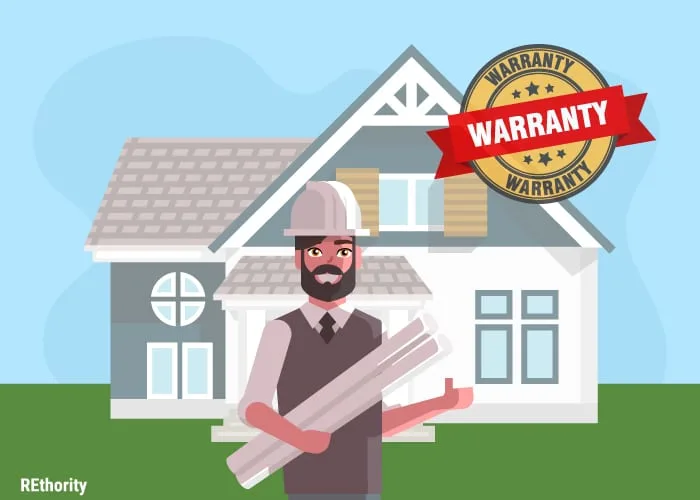
Your roof will come with a warranty covering it for a set time if anything goes wrong. All warranties have different time periods and terms.
You need to know exactly what your warranty states, and it should be clearly defined in the estimate.
Look for specific information on different warranty options (some cost more), the warranty for each material used, any manufacturer warranty, and workmanship warranty.
Make sure you are aware of anything that can void a warranty and how long the warranty lasts.
Estimate Validity Period
After you get your estimate, it’s not good forever. You’ll need to decide within the period the estimate is valid for. You should know exactly how long the estimate is good for, and it will be detailed in the estimate.
Generally, most estimates will be good for 90 days. If you wait longer than that, the estimate might be updated to reflect new prices.
This is especially true if the cost of roofing materials has gone up in the time since your last estimate.
Right to Recession
Your estimate should leave you room to back out of the agreement if you change your mind. Usually, the law grants you three days to change your mind after signing the contract.
This will be outlined in your estimate. Also, look for details on how a recession from the contract will be handled by the contractor.
Some charge a fee or percentage of the total cost of the job if you back out after signing.
We partnered with Networx to help you find local roofing companies. Click to below to get a FREE quote.
So, How Much Does a New Roof Cost?
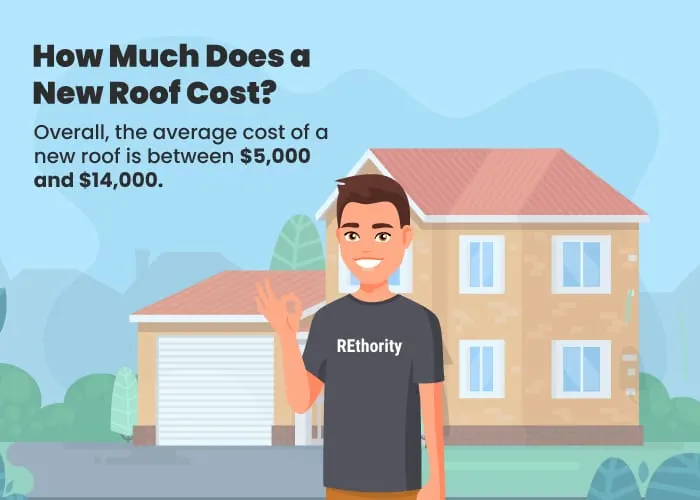
When everything is said and done, you’ll likely end up paying somewhere between $5,000 and $14,000 for a new roof. Be mindful as you choose your materials to keep your costs down.
But the most important thing to do is find a qualified, trustworthy contractor or company to install the new roof.
A good company will be upfront with you about costs, the process, the length of time it will take, and how they’ll handle unforeseen problems.
They’ll also provide you with a detailed estimate that prepares you for the process and ensures you’re on the same page.
Buying a new roof isn’t a small expense, but you can ensure your money is well spent by taking special care to find a great contractor to do the job.
And by educating yourself on the process as you’ve done by reading this guide, you ensure there are no surprises along the way you can’t handle. Your contractor will appreciate your understanding of the process and costs, too.

